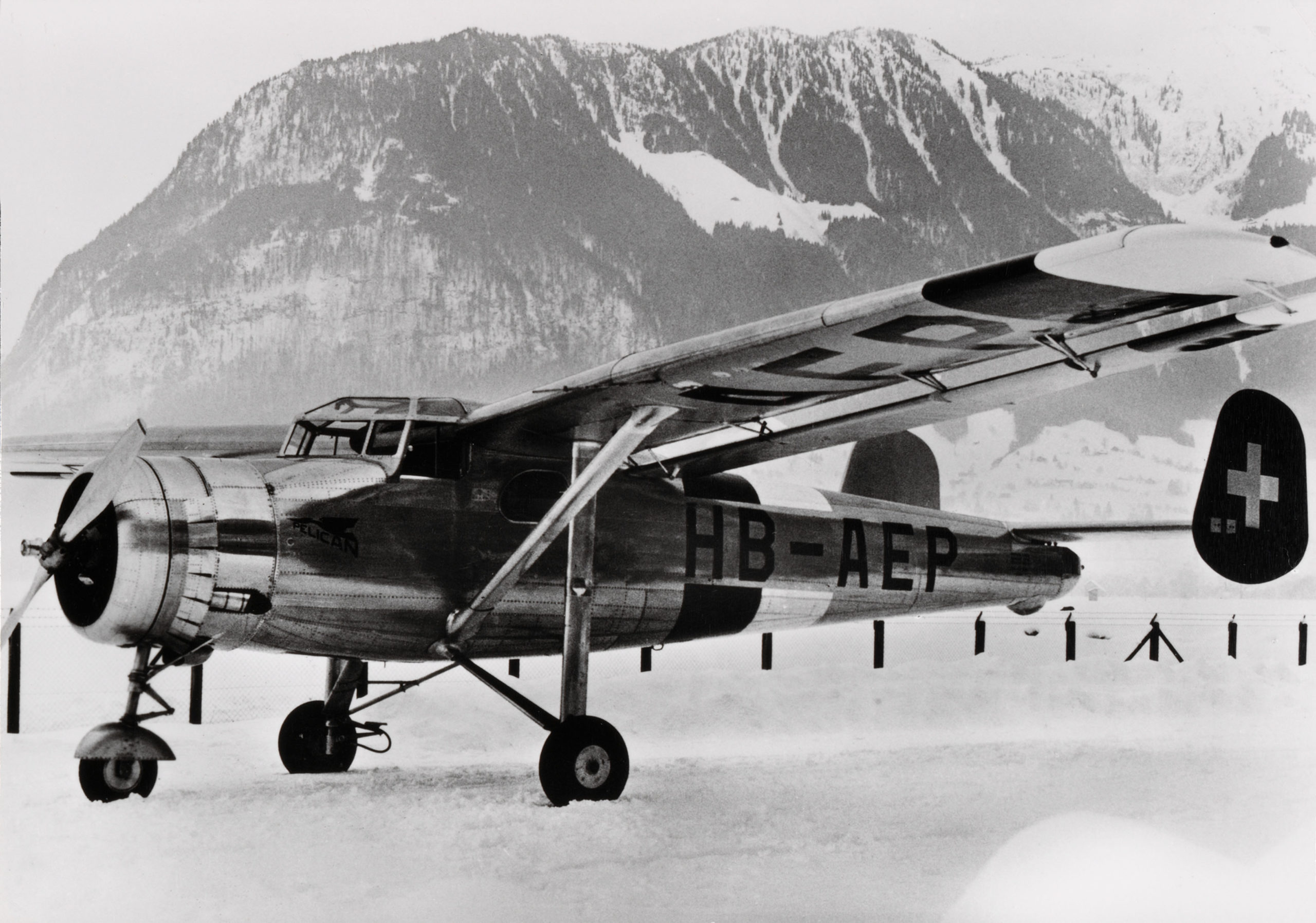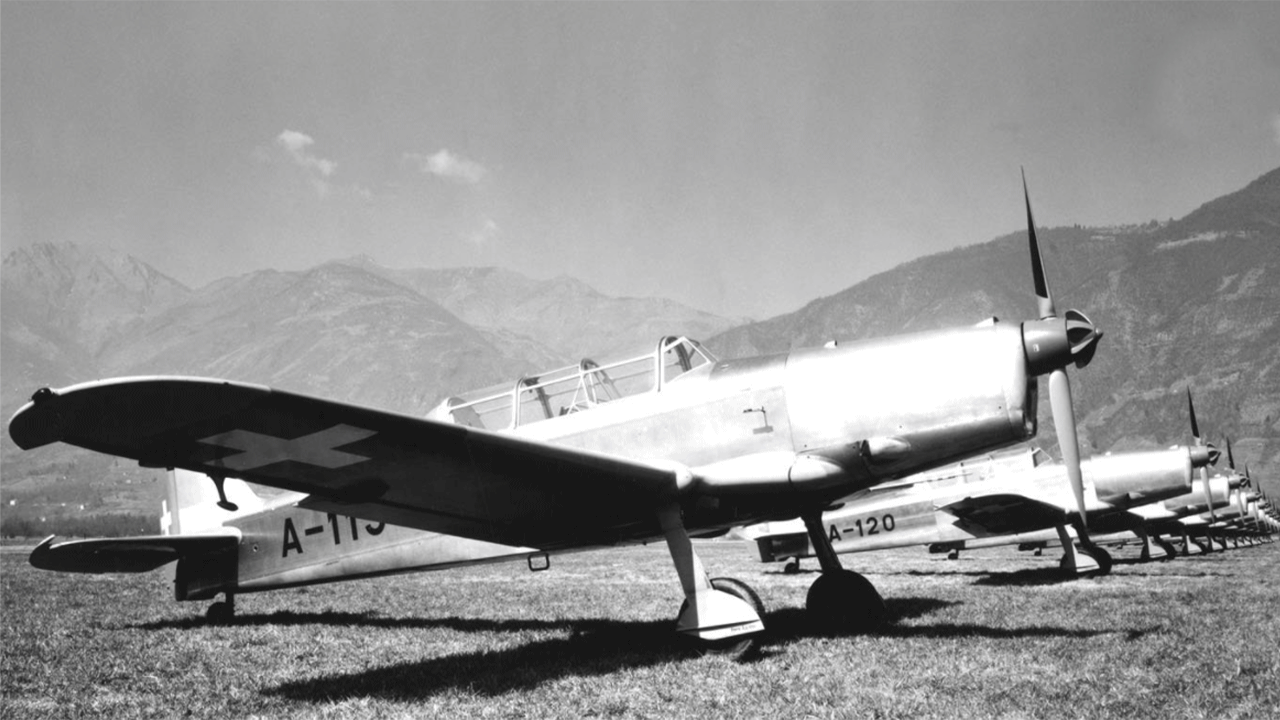In the heart of Switzerland, Mount Pilatus is the Lucerne epicenter of legends and beliefs. Considered cursed, it was forbidden to enter for centuries to protect the people of Lucerne from the wrath of Pontius Pilate, whose body and soul would lie at the bottom of an alpine lake. Finally, the spell was broken by a courageous pastor in the 16th century. Another legend claims the presence of dragons. They would have made their nest on the rocks of the peak at more than 2000 meters of altitude, becoming the symbol of the place. But the story of this part of the Swissness series will not be about either of them. Another flying species has settled between Pilatus and Lake Lucerne. A little less mystical, but just as graceful and bewitching. It is the story of the most Swiss of aircraft manufacturers, with a name that is true to its origins, Pilatus Aircraft.
Tinged with Swiss heritage and hints of kerosene and sulfur, the designer, producer and seller of Pilatus Aircraft is undeniably one of the jewels of Swiss industry. In the 80 years of its existence, it has also established a strong position on the world stage. As the undisputed flagship of international aeronautics, the company with its many propellers sets the tone today, driven by its avant-gardism and its know-how. Business, training and transport aviation, everything is possible. However, a golden future was far from being promised to this small factory lost in the middle of central Switzerland. Overwhelmed by the reputation of the eponymous mountain range, it has managed to emerge from the shadow of its name.
Stans, Nidwald, Switzerland

If in 2020 military aviation, mainly focused on training and transport aircraft, accounts for only 25% of sales and 28% of employees compared to civil aviation, in 1939 the situation was quite different. It is December 16 in a conference room of the Nidwaldner Kantonalbank. It was the day Pilatus Aircraft was founded, supported by three players. On the one hand, the Elektrobank AG, renamed Elektrowatt in 1946, whose activities focused on the financing and development of electricity companies. On the other hand, the Swiss-German industrialist Emil Georg Bührle and the Austrian arms dealer Anton Gazda. Their destinies were already linked by the Werkzeugmaschinenfabrik Oerlikon-Bührle & Co (Machine Tool Factory Oerlikon-Bührle). The first is the director and the second is the engineer. Moreover, to have a more global vision, the company that will become Oerlikon-Bührle Holding in 1964 also owned the shoe manufacturer Bally, before selling it in 1999 to Texas Pacific Group. But that’s another story, which we’ve already talked about (read: Bally, when Swiss and Made make the pair ). Let’s go back to 1939.
Originally, the Stans-based company was founded with the objective of modernizing the Swiss aviation industry, working in collaboration with the Swiss Air Force. Keeping in mind the year of its foundation, the air was not very calm over Europe at that time. Moreover, to mark the official inauguration in 1942, even General Henri Guisan made the trip. The tone was set.
The 80 years in loops
Despite the skills gathered around this nascent project, Pilatus Aircraft’s first prototype was an abject failure that didn’t even make it to the runway. The P-1, a single-seat trainer for the Swiss army, remained a “bird on paper”. But the manufacturer would eventually take flight with another strange bird, the Pelikan. The SB-2 Pelikan flew through the air for the first time in 1944. Very maneuverable, it was specifically designed to navigate the tight, rocky landscape of its homeland. If it didn’t propel the company to glory, it gave a starting point for future strategy, so well respected by its control tower: to design easily maneuverable aircraft for flying pleasure, while reducing costs. But let’s continue chronologically.

The first real and lasting springboard was not long in coming and was unveiled under the names P-2 and P-3, both of which were training models for the Swiss Air Force. This success, which became international (and yes, the P-3 was even exported), was definitively confirmed in 1959 with another flagship model from the aircraft manufacturer, the Pilatus Porter PC-6. A true legend! Followed by its successor, the PC-6 Turbo Porter, it was manufactured without interruption until 2019, thus writing one of the longest production histories in the industry! But how is such longevity possible? Versatility of use and a single-engine turboprop. Let’s go in order. First, it can be military or civilian. Second, it is distinguished by its STOL (Short Take-off & Landings) credentials, in other words a very short take-off and landing distance! 475 and 315 meters respectively, to put it in figures. Firmly established on this worldwide reputation with the number 6, Pilatus Aircraft continues its research both in terms of performance and technical innovations, pushing the possibilities of small aircraft further with each new model. Just look at the success of the 90s, the Pilatus PC-12 capable of landing on more difficult terrain in a minimum of distance! In this niche of civil aviation and training and high quality, Pilatus has the wind in its sails! Nothing can stop it?

Despite its principles of reliability and Swiss quality, the flagship of the aeronautics industry has several times found itself at the heart of scandals, notably because of the misuse of its aerodynamic jewels for military purposes. The recurring examples are making more and more headlines and the situation is becoming so serious that the Swiss people are being called to the polls. The initiative “For a ban on the export of war material” was rejected. The case is closed. Pilatus Aircraft blows.
End of the Schwenk era and beginning of Hansueli Loosli
When he took over the reins of the aircraft manufacturer in the midst of the conflict, Oscar Schwenk was able to lead the Pilatus Aircraft fleet through two major loops. The first loop was the “civilization” of the company, with a focus on business aviation. The second was a reorganization of the shareholders, with a decision to focus solely on aircraft manufacturing. No more subcontracting and dispersal in Stans! The aircraft is back at the heart of the matter. This turnaround has been more than beneficial, as the company has been able to focus on new models. In fact, let’s talk about the one that has become its new technological feat: the PC-24! Capable of carrying up to 10 passengers, it can land on unprepared runways and, in keeping with the manufacturer’s DNA, has particularly advanced STOL credentials. So how does it differ from previous models? It’s not a turbo-prop aircraft, but a jet. The first one from Pilatus Aircraft!

With 300 engineers out of more than 2,200 employees, the aircraft manufacturer is definitely on the high-tech track, implementing numerous tools such as virtual avionics prototyping systems, 3D printing or even the production of high-end carbon fiber to design its metal birds. All of this is done with a view to both energy efficiency and noise reduction to keep up with the times. On the construction side, state-of-the-art skills are combined with long experience. In fact, it takes 14 to 16 months to build an aircraft, 129 of which were completed in 2020. Spoiler: the PC-12 is in the majority, followed by the PC-24!
Oscar Schwenk was able to turn the corner, which enabled the company to get through the turbulence of the pandemic with the cabin up! The aerodynamics engineer from Lucerne has recently handed over the baton to Hansueli Loosli for the next stage of the journey.

With the headquarter in Stans and two other offices in the USA and Australia, the Pilatus phenomenon has enveloped the aerospace globe with its sweet fragrance of motor oil. With sales in all four corners of the world, 39% of which are in the Americas and 25% in Europe, the Swiss aircraft manufacturer with its visionary spirit is nevertheless keeping its feet on the ground, meticulously following its principles of safety, performance and Swiss quality! And the metal dragon continues its ascent.
